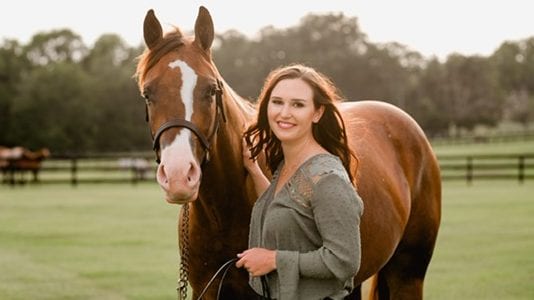Anyone who has spent time around animals, and horses in particular, know they can be unpredictable. Even with gentle and well-trained horses, accidents and injuries occur. A person harmed by a horse may suffer serious injuries requiring expensive medical care. A person who suffers a horse-related injury may sue the horse’s owner, the property manager, the riding instructor, or the landowner for their injury.
Unfortunately for horse professionals, some people are known for being “sue happy,” and lawsuits can be costly. Even if an equine professional successfully defends a lawsuit, legal proceedings can be time-consuming, stressful, and expensive. But there is some good news for professionals in the horse industry. Equine professionals can reduce their chances of being sued by using a properly drafted waiver.
What is a Waiver?
A waiver protects a business or professional from liability in the event of an accident. A waiver is a written contract that educates the participant of the risks of the activity. When signing a release, the person acknowledges they understand the activity’s dangers and accept such risks. A written record makes it difficult for the injured person to claim later they were unaware of the potential risks of engaging in a horse-related activity.
Although frequently used in the horse industry, there is some doubt about the effectiveness of waivers. Some have argued waivers are “not worth the paper they’re written on,” leaving many professionals unsure whether they should use a waiver. Often, professionals who use a waiver treat the document as a mere formality, uncertain of its effectiveness.
So, you may be wondering whether your program needs a waiver. In short, the answer is…yes. All professionals engaged in equine-related services should require clients, guests, and spectators to sign an adequately drafted waiver before engaging in any horse-related activity to protect against liability in the event of an accident.
Why Use a Waiver?
Waivers help horse owners and professionals in two significant ways. First, waivers provide a defense if there is a lawsuit. When adequately drafted in compliance with state law, signed waivers can result in a complete dismissal of a case.
Second, a waiver discourages people from filing a lawsuit in the first place. It is important to note that waivers do not entirely prevent a lawsuit – a person can file a legal claim even if they signed a valid, enforceable waiver. But, the waiver can be used as a defense when a lawsuit begins. Additionally, reading and signing a document might cause a person to think twice before engaging in highly risky horse-related activities.
Furthermore, lawyers may be reluctant to represent an injured person if the person signed a waiver. Lawyers who represent plaintiffs (the injured person bringing the lawsuit) often work off of contingency agreements, meaning the lawyer only gets paid if their client wins. Lawyers are less likely to take cases when the person being sued has a strong defense.
Tips for Using Waivers
Requiring someone to sign a waiver will not automatically protect an equine professional from being sued. The person signing must understand the risks of the activity and what rights they are giving up when signing a waiver. A court will not uphold a waiver if it is unclear or misleading. If an equine program or professional decides to use a waiver, there are a few essential things to consider.
A Waiver Should be Easy to Read
A waiver should be titled in an easy to read, large, bold font stating something similar to “Release and Waiver of Liability.” The title should tell the reader the document’s purpose, even if they were not to read the rest of the document.
It is best to keep a waiver to a single page and have the terms typed in standard-sized print. Waivers should avoid complicated and unclear language. It is preferable to have the terms of the release in plain language that can be understood by all readers.
A Waiver Should Comply with State Law
The legal requirements of a waiver vary from state to state, and failure to comply with your state’s law could make the waiver unenforceable. It is crucial to keep state law in mind, as many professionals use documents obtained from a friend or downloaded from the Internet. These generic documents can be problematic because they often contain broad language not specific to the equine program or in compliance with state law, so such generic forms may be found unenforceable by a court.
A Waiver Should be Specific
Waivers must have clear and unambiguous terms; generally, with the waiver’s language, the more specific, the better. A waiver should inform the participant of the inherent risks related to equine activities. A vague statement such as “horseback riding can be dangerous” does not adequately tell the risks.
The waiver should also include an explanation of why horseback riding can be dangerous. A good starting point for coming up with this language could be your state’s equine law, which likely defines equine-related activities’ inherent risks.
Equine laws limit liability for injuries and deaths resulting from horse-related activities. The idea behind these laws is that a person dealing with horses “assumes the risk” inherent in horse-related activities. Some equine professionals believe that because they have an equine activity statute in their state or posted a sign of the law on their property, they are immune from liability.
Unfortunately, this is not the case. Waivers and equine activity statutes protect horse professionals from different types of lawsuits. Even though posting an equine activity statute is a great start, horse professionals should still require people using their services or entering their property to sign a waiver.
A Waiver Should be Signed
A signature demonstrates that the person signing read and understood the agreement. Before having a person sign a waiver, ensure the person has adequate time to read the entire document. It is also a good practice to ask the person signing if they read and understood the waiver.
Additionally, a person signing a waiver can only sign away his or her rights. It is essential to have family members, guests, and spectators on the property sign their own release. If the participant is a minor, the minor’s parent or guardian should also sign the waiver.
Generally, only parties explicitly named in a waiver are protected from liability. This issue comes up in situations where multiple horse professionals are working at the same location. For example, a riding instructor may have a student sign a waiver releasing the instructor from liability if they get hurt. But, if an accident occurred, caused partially by the riding instructor’s fault and partly by the property owner’s fault, the property owner could still be liable if not named in the waiver. Each party should ensure they are listed in the waiver participant’s signed document, so there is no uncertainty about who is covered.
In conclusion, waivers offer a powerful defense for equine owners and professionals if the waiver’s terms are clear, the correct parties are named, and the waiver is signed. Equine professionals and owners should use a release that suits their particular program and have participants sign the document before engaging in horse-related activities. While it may take a little time and money to use a proper waiver, it will undoubtedly be less expensive and less time consuming than a lawsuit.









